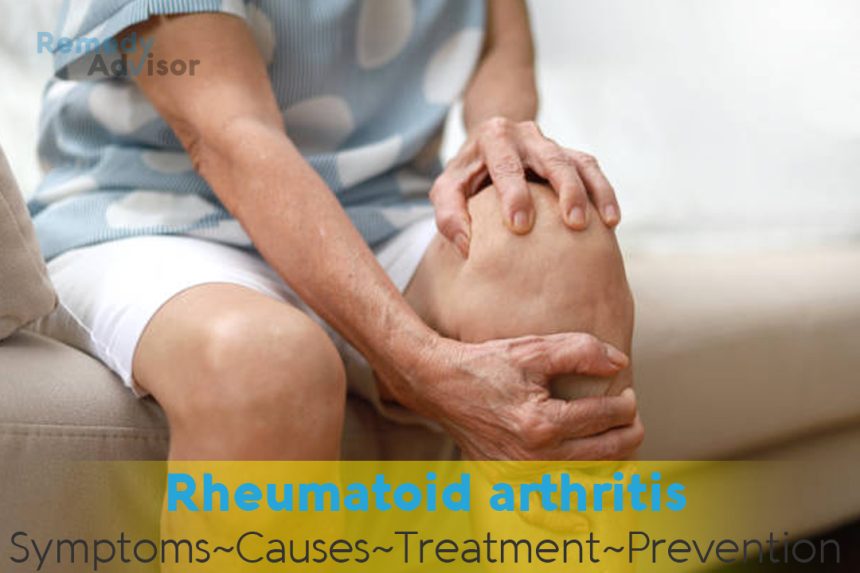What is it
Rheumatoid arthritis (RA) can be a very severe form of arthritis. It is a chronic, disabling dis- order that can cause a multitude of physical woes, including inflammation and eventual destruction of the joints and cartilage throughout the body. It can also affect the lungs, muscles, blood vessels, skin, and heart.
Fortunately, not everyone who has this dis- ease is severely affected. Many people with RA experience only minor symptoms, and in some cases the disease simply ends, or “bums out.” Less common than osteoarthritis, rheumatoid arthritis affects upward of 2 percent of the population, with three times more women than men suffering its effects. Although the disease typically manifests itself in people between the ages of 20 and 40, it can start at any age.
The source of the initial inflammation is unknown, but many doctors and researchers consider the disease an autoimmune disorder. Disorders of this nature result when the body initiates an immunological response to protect itself against something that has been mistakenly recognized as foreign.
The joint damage caused by RA begins with an inflammation of a layer of tissue called synovium. The inflammation leads to a thickened synovial membrane owing to an overgrowth of synovial cells and an accumulation of white blood cells. The release of enzymes and other items by these cells can erode the cartilage that lines the ends of joints, as well as the bones, ten- dons, and ligaments within the joint capsule. As the disease progresses, the production of excess fibrous tissue limits joint motion.
Symptoms
- Early symptoms (prior to obvious joint involvement) ore generally nonspecific and include fatigue and weakness; low-grade fever; general feeling of poor health; and loss of appetite and weight loss.
- Red, swollen, painful joints, most often those of the fingers, wrists, knees, ankles, and toes on both sides of the body. (This symmetrical pattern and inflammation differentiates it from osteoarthritis. Also, rheumatoid arthritis, unlike osteoarthritis, usually spares the joints nearest the fingertips.)
- Tender joints, warm to the touch.
- Stiffness, especially after awakening in the morning; usually improves during the day.
- Red, painless skin lumps (rheumatoid nodules) on the elbows, ears, nose, knees, toes, or bock of the scalp (sometimes).
- Bent and gnarled joints (with long-term rheumatoid arthritis).
- Chest pain, breathing difficulty (advanced cases).
What causes it
The exact cause of RA is unknown, but a tendency to develop it can be inherited. Some researchers believe that a virus may be associated with its development, while some think RA may be linked with an infection. Since the ratio of women to men with RA is three to one, other experts believe hormonal factors may play a role.
What if you do nothing
If left untreated, RA may severely restrict the range of motion of some joints, or worse, destroy the joints altogether. Conversely, in some cases the disease may go into remission.
Home remedies
There is currently no cure for RA. However, the following remedies will help relieve pain, reduce inflammation, or help slow joint damage.
Take anti-inflammatories
Those recommended by your doctor may include aspirin, ibuprofen, naproxen, or a combination of more powerful prescription drugs. Aspirin is the cornerstone of therapy for many patients. To be effective, aspirin is taken in doses higher than commonly used. If stomach problems develop, speak to your doctor. (Using enteric, or coated, forms of aspirin will not necessarily prevent stomach problems because most of aspirin’s effects, including those that cause gastrointestinal disturbance, are systemic, not local.)
Try hot or cold packs
Depending upon which temperature feels better, apply a hot or cold pack to a stiff or painful joint.
Try some heat
Apply a cream containing capsaicin (the main ingredient in hot peppers) to your painful joints. Creams or lotions containing camphor, menthol, or turpentine oil may also provide relief from minor pain symptoms.
Get plenty of rest
Sleeping 10 to 12 hours a night is optimal. When your joints feel warm, swollen, and painful, cut back on unnecessary physical activity.
Perform range-of-motion exercises
To maintain joint mobility, perform light exercises that will help preserve the mobility in the painful joint
Exercise gently and regularly
The gentle movement of regular exercise is an effective therapy for RA. Walking and swimming are two excellent activities that will help maintain flexibility in the joints and will strengthen the muscles supporting them. Let your physician or physical therapist outline a program for you. When your joints feel good and are not warm or swollen, warm up your muscles by exercising at a very slow, controlled pace. Once you begin to lightly perspire and your muscles feel loose, gradually increase the intensity of the exercise. Don’t overdo it; cut back or stop your exercise if you experience fatigue or pain for more than an hour after stopping. The key to a successful program is to find a balance between exercise and adequate rest. Too much or too little of either can worsen your RA.
Ease the strain on painful joints
Make use of devices or gadgets, such as an electric can opener and larger pens, that will minimize joint involvement.
Ask your doctor about a splint
A special lightweight splint for the hands or wrist can be useful in protecting an injured joint and relieving pain.
Prevention
At present, there is no known way to prevent rheumatoid arthritis.







